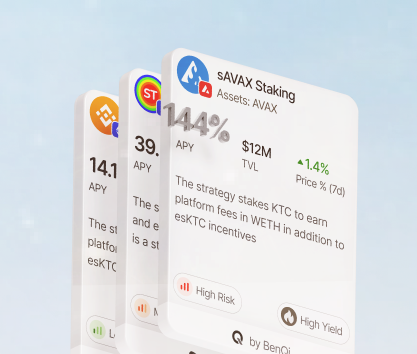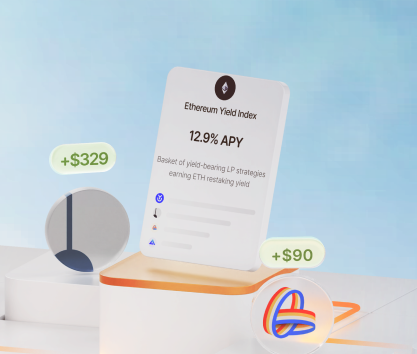In 2024, investors can choose from over 13,000 different DeFi protocols, and, more relevant to our topic, over 2,000 of them can qualify as yield farming platforms since they offer rewards in exchange for user funds. The proliferation of this particular investment scheme through the DeFi ecosystem is not something surprising.
Crypto investors are often looking for the best investment opportunity on paper and flock to places with high annualized percentage rates without any respect for the high risk associated with allocating capital to such protocols. The competition in the industry leads to DEXes and investment protocols fighting for liquidity. To attract investors, these protocols have to give generous rates. However, there is an obvious cap on how high you can set APR for a typical two-sided pool since these profits must come from revenues generated by it.
There are three simple ways to circumvent this restriction:
- Set up a liquidity pool for tokens with vastly different values and pay high rates with the cheaper coin.
- Launch a degen farm to acquire user funds in a pump-and-dump scheme to infuse legitimate pools with assets.
- Issue native coins or create a DAO with governance tokens to reward contributors to liquidity pools.
The first two options are very close to criminal activity and should not exist at all. Unfortunately, uneven value pools are offered by all sorts of DEXes to incentivize users to use certain trading directions. The second option is not as prolific as in 2022 but you can still find some projects that operate like “standard” pyramid or Ponzi schemes.
APR and risk management in DeFi
Annualized percentage rate refers to the interest accrued by investors for staking their tokens in various liquidity pools using smart contracts launched by DeFi protocols. The rate is just that — the sum you will receive if you hold funds for a year. Another important metric that you may find is APY which is the annualized percentage yield. This metric accounts for compounding which is usually daily. Banks and some CeFi institutions use quarterly, biannual, and annual compounding.
A high APR usually indicates three things:
- The protocol wants to attract investors and increase the size of liquidity pools to facilitate larger trading volumes.
- The protocol has a way to pay interest in tokens that are not associated or correlated with target assets invested by users.
- The protocol uses high-APR pools to advertise its other investment options or to rebalance pools’ asset composition.
For example, Aerodrome is one of the most generous exchanges in the DeFi sector with some relatively large pools (over $10 million TVL) paying up to 165% APY in AERO rewards. With the native token price fluctuating with a high volatility of over 10%, investors can make good money on speculative trading.
These incredible gains cannot come without an equally high level of danger. We call it a risk premium for a reason. Lucrative APRs must have a very weak foundation or short life cycles to make sense.
Potential risks in high-APR yield farming
Investors are usually aware of the dangers that are common in the crypto market and the DeFi sector specifically. However, up to 70% of newcomers do not have any prior experience with the crypto market and may feel overconfident despite lacking any hands-on time with various protocols and their complex investment products.
Let’s talk about some of the dangers that are exclusive to the DeFi sector:
- Smart contract vulnerabilities are some of the most common issues in the sector with bridges specifically suffering from hacker attacks. A tiny self-executing program can carry all sorts of weaknesses. It is important to choose platforms that conduct regular external code audits and run generous bug bounty programs.
- Impermanent loss occurs when assets in the pair change value due to market volatility leading to real-time adjustments. If an investor stakes certain assets that lose value, they are effectively suffering from the recomposition of assets. The loss is called impermanent because prices can recover. Unfortunately, over 50% of UniSwap liquidity providers lose money due to this particular issue.
- Low liquidity risks are associated with pools that have low TVL and may prevent some investors from exiting positions without losing value in the process. This issue leads to an interesting phenomenon where investors flock to certain pools due to growing TVL causing a snowball effect even if APRs are lower than what many tradfi instruments usually offer.
The influence of liquidity and volatility on profitability
In general, investors are encouraged to invest in pools that have high TVL indicating a robust investment model that builds trust. For example, the biggest pool in the DeFi sector is managed by the liquid staking protocol LIDO on Ethereum with over $22 billion locked in the stETH pool offering a low 2.94% APY. The rate is much lower compared to direct layer-1 staking that yields anywhere from 4% to 11% depending on market conditions allowing users to consistently beat tradfi offerings like the interest on US treasury bonds (4.11% in 2024).
However, LIDO offers a very lucrative proposition: the ability to still use ETH locked in stakes on a variety of protocols for additional gains. For instance, you can use stETH as collateral on Aave to take out a loan in USDC and stake stablecoins to collect rewards on any Ethereum-based DeFi yield farming protocol.
Such schemes work only in ecosystems where liquidity is abundant allowing investors to quickly move assets, enter and exit positions smoothly, and receive rewards that can be turned into other assets without any hassles. At the same time, volatility profoundly affects the outcome of yield farming investments. AERO tokens have a very high annual volatility of over 30%. When the market is high, investors enjoy incredible returns. When prices go down, so do the earnings.
The highest APR yield farming strategies
It is important to remember that high rates are associated with very dangerous investment options. Memecoins, infamously, offer very high returns reaching in some cases 28,000% APY and more. This particular figure is from the PEPE-WETH pool on UniSwap operated by Beefy Finance offering a high 85% gain in PEPE and reaching a 28,209% 30-day mean average. The low TVL of $101K should immediately tell you that something is very wrong with this pool.
While avoiding memecoins and obvious rug pulls is something that we all should do, some high-APR strategies can work if you know how to time your exit correctly.
An overview of strategies for profitability optimization
The DeFi sector has several thousand different protocols. Many of them have zero on-chain activity, but the vast majority of tracked protocols are active and allow users to earn well. We are going to discuss some interesting setups that contemporary crypto users can use to achieve higher gains.
- Luquid staking platforms can be useful if you are interested in yield farming. For instance, MakerDAO has a DAI Savings Rate module allowing DAI holders to stake their tokens while receiving sDAI in exchange at a 1:1 ratio. Newly acquired tokens can be used as collateral on various partnered protocols to take out loans in USDC. Transfer stablecoins from Ethereum to Base using any bridge you like and stake them in the USDC-AERO pool on Aerodrome for 424% rewards in AERO tokens.
- Focusing on stablecoins in two-sided pools. Some investors are trying to secure higher APRs by betting on the performance of weak assets paired against DAI, USDT, USDC, or any other coin pegged to the US dollar. In such cases, impermanent loss is an issue for the cheaper token which can be disposable compared to other holdings. For example, Pearl V2 has a USDC-PEARL utility pool on the Re.AI chain allowing users to earn up to 700% in native tokens that may shoot up in price somewhere down the line. If you have faith in such low-probability setups, using this approach can be a good idea.
- Hunt for rewards on established protocols. Some platforms have valuable native digital assets attracting investors and speculators. For example, Curve DEX is one of the biggest exchanges in the DeFi ecosystem with a massive $1.7 billion TVL and incredibly high daily trading volumes. The protocol and its Convex Finance branch pay in CRV/CVX rewards while still offering pool rates that are more than reasonable. The WETH-ZUN pool on Convex Finance promises a 1.31% APR on the pair and up to 230% in CRV/CVX tokens.
It is important to select proper platforms for yield farming strategies. Interestingly, the criteria depend on your risk style and desired profitability. In some cases, picking risky platforms and chains like Aerodrome on Base or even BabyDogeSwap on BSC can be a good idea if you plan to time the exit well and leave someone else holding the proverbial bag. We are going to talk about factors that you should consider when choosing a “normal” investment where risks are taken seriously.
Here are some tips on searching for platforms with the highest APR:
- Focus on TVL as it is the most telling metric in the DeFi sector. The total value locked represents the amount of assets currently held in all pools. TVL can be also calculated for separate pools. We strongly suggest setting a low bar for the protocol’s TVL. For example, don’t even consider platforms with less than $5 million in combined TVL. On the other hand, projects like LIDO with over $22 billion in total value locked are often considered the safest in the whole sector.
- Consider the underlying blockchain. Ethereum is still the number one destination for all serious DeFi investors. Protocols here provide valuable utility and have tokens that reach some sort of equilibrium in the market organically. Solana is a completely different beast as its low gas fees and cheap token minting attracts low-effort projects like memecoins, rug pools, degen farms, and more. Again, it can be an advantage in some cases.
- Always estimate gains in reward tokens converted into an asset with value you can easily comprehend. For example, receiving thousands of percentage points on PEPE investments may sound awesome but the price of PEPE, which is minuscule at best, should be considered and all potential rewards immediately converted (on paper) into USDT or ETH to give you a better picture of how much you can gain by investing in these risky pools.
We want to talk about some of the biggest yield farming protocols that exist in the current landscape of the DeFi sector (in September 2024). Note that we do not endorse any of the choices below.
- Curve DEX is a multichain exchange that has a massive $1.795 billion combined TVL. Yield farming opportunities are offered through the Curve Finance and Convex Finance protocols that have over 544 and 217 tracked pools respectively. The former has an average APY of 12.2% and the latter — 7.25%. The best pool for rewards on Convex is the WETH-ZUN pool with a $165K TVL and up to 296% in CRV/CVX rewards. Curve Finance has a limited-time pool for Polygon users where you can invest in the MATIC-CRVUSDBTCETH pool for a massive 1,870% reward APY.
- Pendle on Ethereum is one of the biggest yield protocols with over $2.1 billion in combined TVL across five different chains. The protocol offers a wide range of limited-time pools with predefined maturation dates allowing users to plan their investments. If you are looking for the best APR in DeFi 2024 can give you without exposing you to unfathomable risks, checking out this platform is a good idea. You can invest in the SOLVBTC.BBN pool on CORN for 3.7% pool APY and over 19.11% in rewards. This particular pool has a solid $34 million TVL.
- Aura is an interesting choice. The protocol has over $347 million in combined TVL. One of the downsides of investing with this protocol is that you will have to switch between five different chains (Ethereum, Arbitrum, Optimism, Polygon, and Gnosis). Additionally, you will be putting assets into low-TVL pools. For example, DFX-WETH pool on Arbitrum has a very low $21K TVL and barely any user activity but the setup allows investors to earn up to 63% (30-day mean average) APY. Alternatively, the WPOL-MATICX pool is much safer with a $6.48 million TVL and 2.7% reward APY.
We strongly encourage our readers to focus on DYOR (do your own research) and test various protocols personally to have valuable first-hand experience. Many tracked pools may outperform expectations. Protocols also have additional investment options and programs that significantly sweeten any investment in a pool with rewards. With the current diversity in the DeFi sector, we cannot simply make blanket statements that some platforms are better than others even if there seems to be robust argumentation supporting such rhetoric.
Make decisions based on analysis that focuses on the compatibility of protocol features and personal profitability goals as well as risk style. In 2024, you can spend days doing just that so we encourage you to start now.









